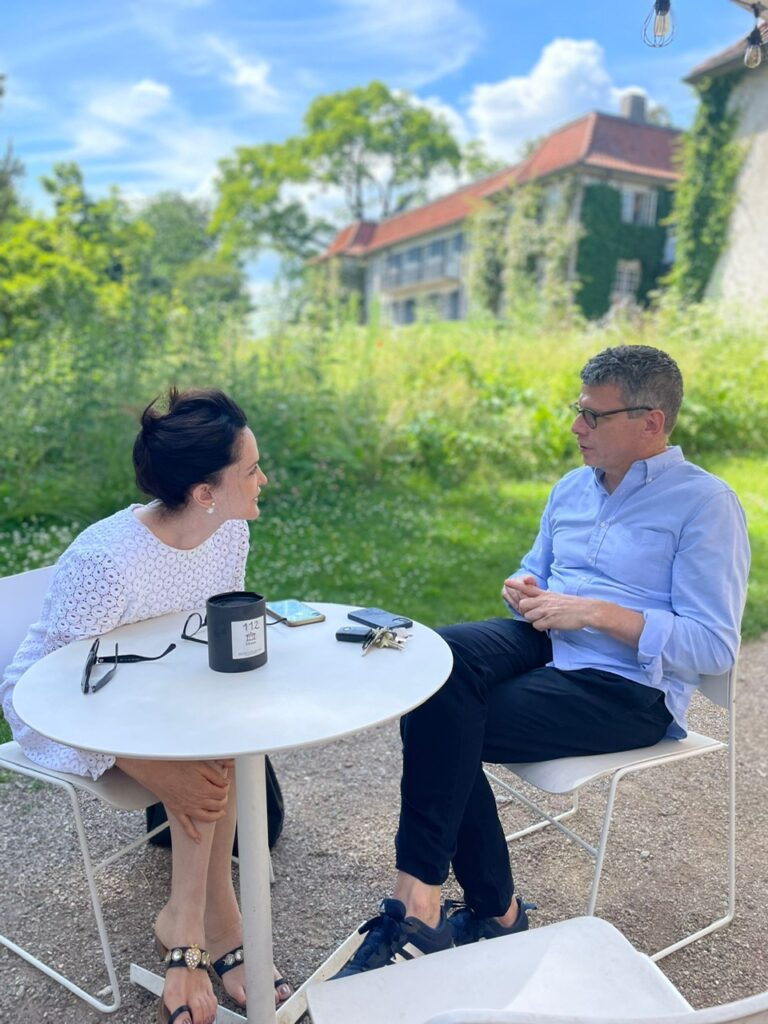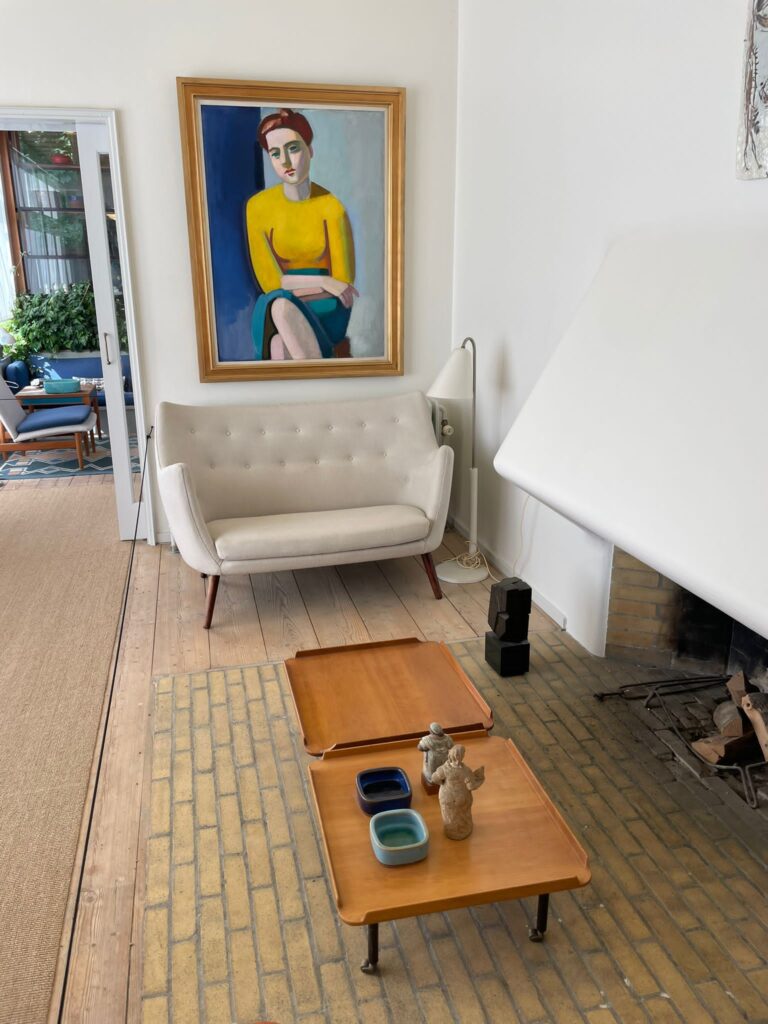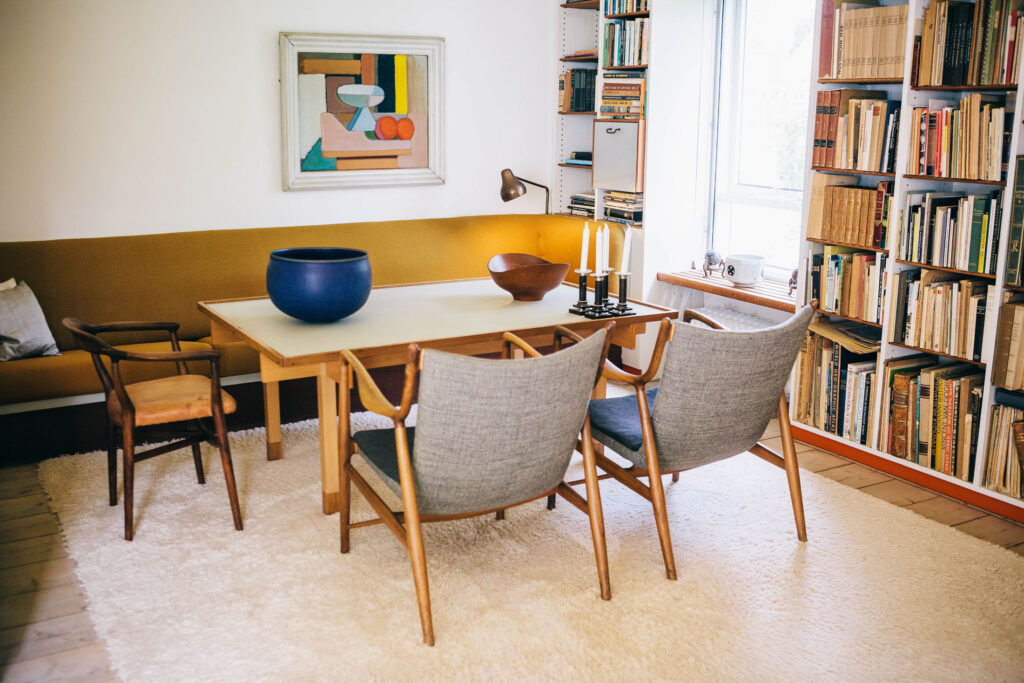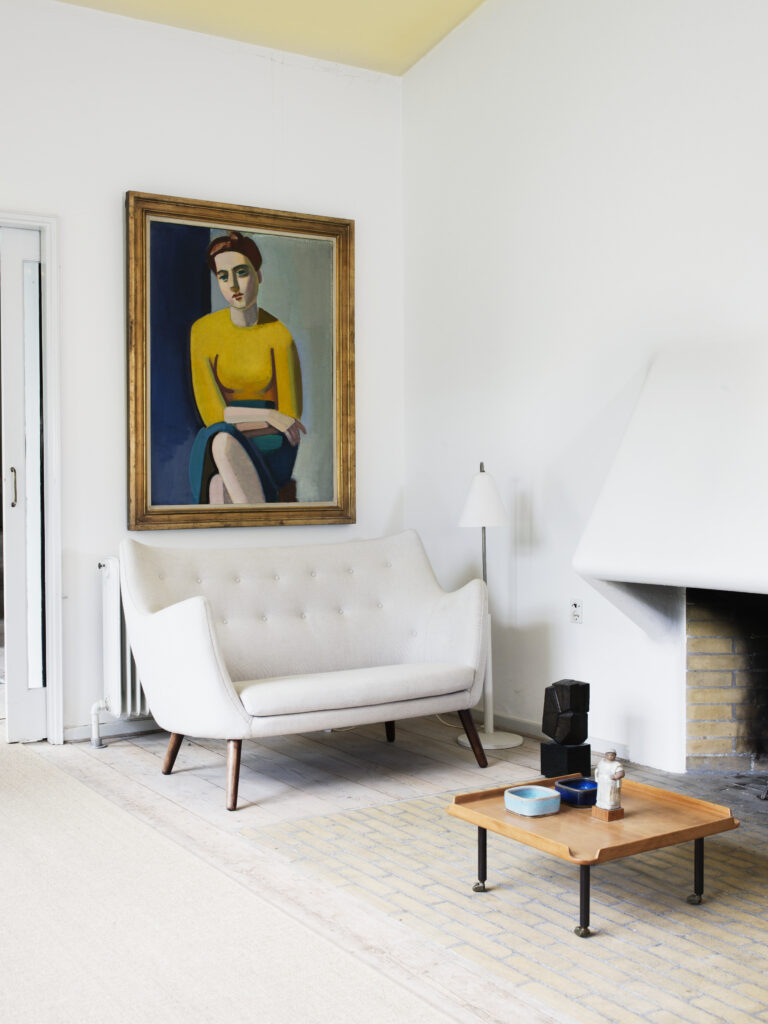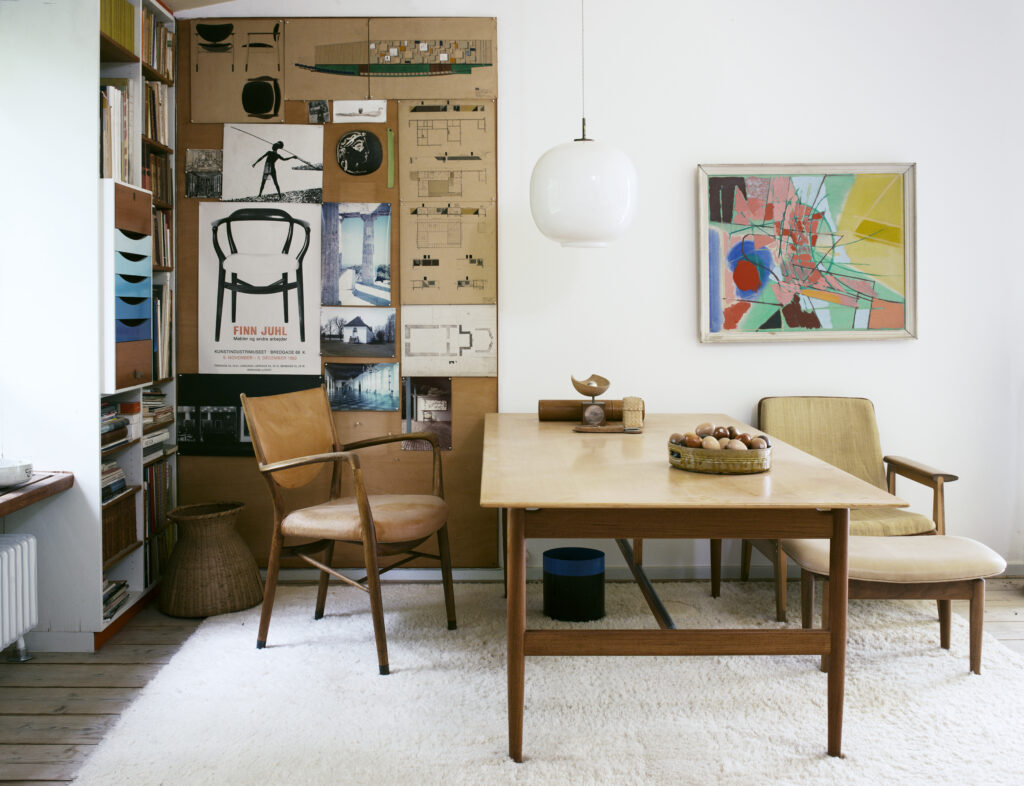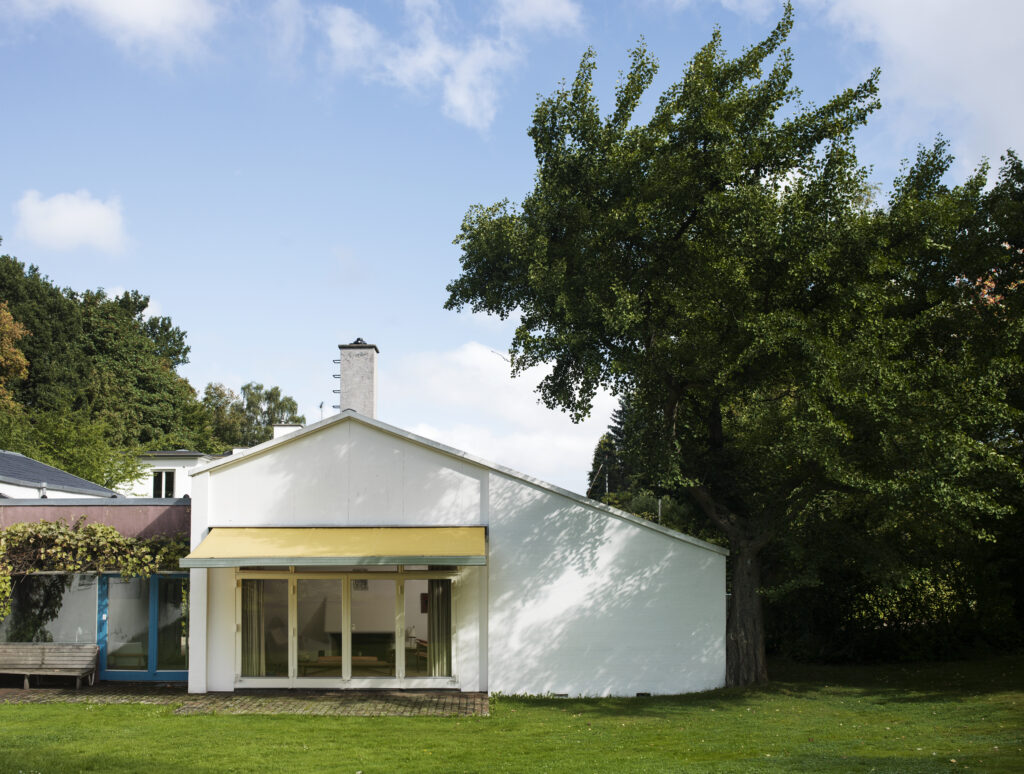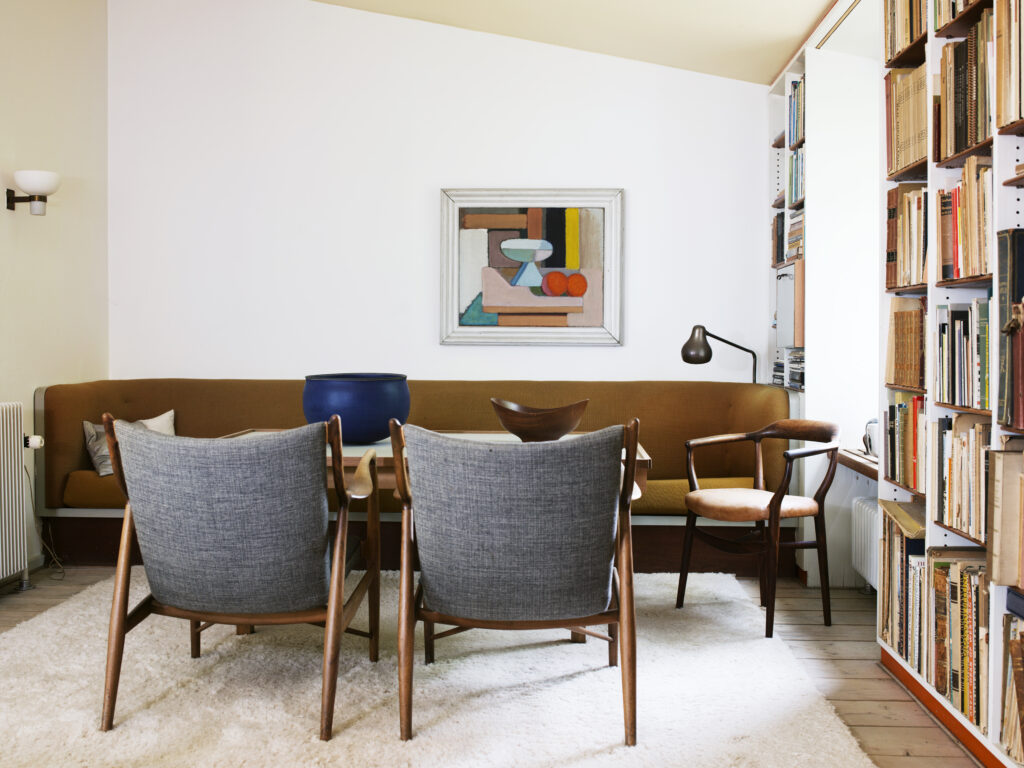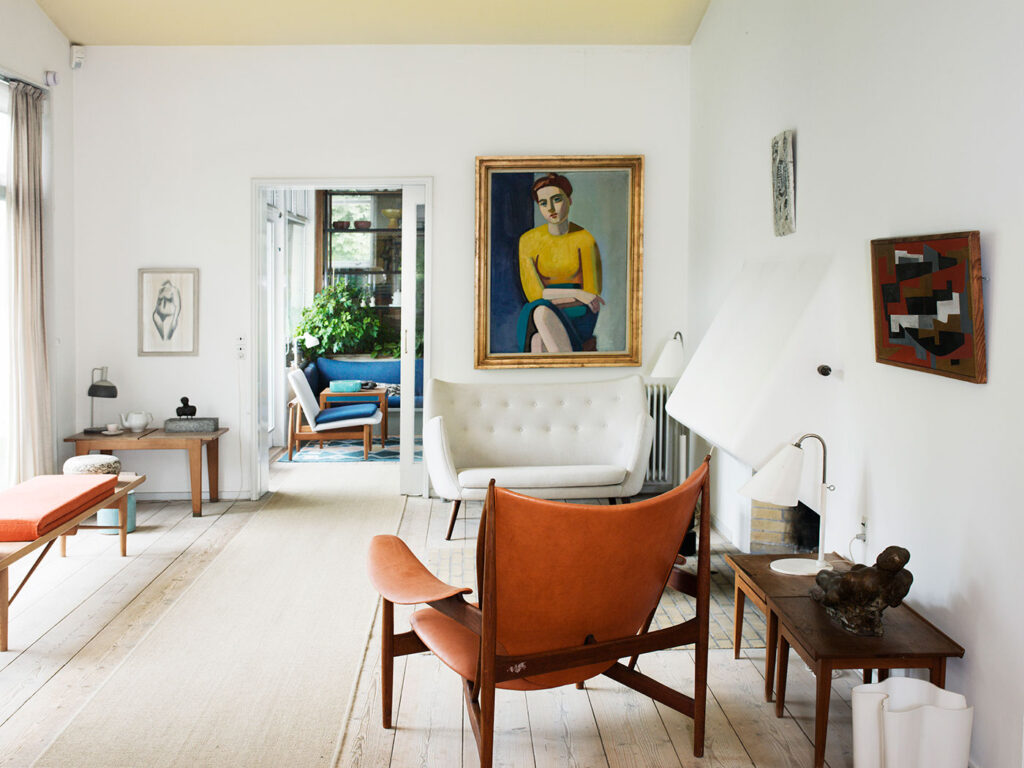
American writer Robin Hobb famously said, ‘Home is people. Not a place. If you go back there after the people are gone, then all you can see is what is not there anymore.’ In my endless architecture pilgrimages, I visit homes of famous architects and homes they created for others—homes that came to change the face of design/architecture history, and I always try to find the hidden details of the lives lived in these places, the spirit that makes design alive, the biographies as they are told by choices and taste. Today, I visited the Copenhagen home of legendary Danish furniture designer Finn Juhl (1912-1989) who is often called the Jean Arp of furniture design. Completed in 1942, before Juhl reached his fame, the house is only one of four he designed, and it is where he called home his entire adult life. Juhl was 30 when he created this modernist home, and he lived there through two marriages, and through the spectacular period of creativity that spanned three decades. He also lived there during the decline of his career until he died in 1989. What can we learn about this gifted designer who created some of the most sculptural and daring pieces of furniture in the story of Danish Modern? What can we learn about his vision of modernism; about the way he chose to live? The renewed interest in Scandinavian design has thrust this house and its intact interiors into the spotlight in recent years, attracting design lovers from across the globe, and has been considered a must-see site in any Nordic architecture pilgrimage.
From the moment he started to create furniture, Juhl demonstrated an ingenious approach and innovative thinking when it came to form, detail, and proportions. He began to collaborate with cabinetmaker Niels Vodder in 1937, and the two formed one of the most successful design collaborations in the history of 20th century design. In the eleven times the two participated in the traditional Copenhagen Cabinetmakers’ Guild Exhibitions, they exhibited sensational pieces that attracted the attention of the press and the industry; they completely departed from anything known before, creating furniture which was daring, expressive, unusual, and dramatic, outside the bounds of Scandinavian design. Some say that he was inspired by the expressive upholstered seats created by Danish architect Flemming Lassen (1902-84). Vodder was a gifted craftsman who allowed Juhl to engineer his complicated structures. Juhl’s chairs are famously named after the years they were designed (for example, in 1945, the iconic chair shown at the Cabinetmakers’ Exhibition was named NV45).
The son of a successful textile merchant, Juhl lived a privileged life. As a student, he could afford living in his own apartment in Copenhagen, and it is there that he started to explore furniture design. He purchased the land in Charlottenlund, Copenhagen’s best suburban neighborhood, when his father died. The austere, simple structure stands in contrast to the elaborate houses in the neighborhood, but when you gaze upon the exterior of the one-story, white structure, nothing prepares you for what you see inside. The dramatic transformation is a part of the living experience, and while the interiors are very much in the spirit of mid-century dwellings—small, intimate, simple, coordinated with the nature outside—the remarkable use of color defines its identity. The interiors are filled with Juhl’s masterpieces. I couldn’t have wished for a better way to visit this iconic house than with Peter Kjelgaard, the world’s leading expert in Danish Modern furniture and the head of Design at the local auction house Bruun Rasmussen. Through Peter’s explanation about the history of each piece and the unusual construction, I was able to fully understand the uniqueness and connoisseurship of this highly personal presentation. While Juhl was known to create furniture of exotic woods—mainly mahogany and Brazilian rosewood—he chose to live with the simpler teak. After his second wife, Hanne Wilhelm Hanse, died in 2003, the house went up for sale. In 2008, it was purchased by Birgit Lyngbye Pedersen, who gifted it to Ordruupgard, an art museum complex that maintains the property as a historic house.
Juhl, we learn, was as unconventional a character as his furniture—the Chieftain Chair, the Pelican Chair, the Poet Sofa. He chose to live the mid-century moment and remained living in the house even after this type of living and his own furniture fell out of vogue. He was a master in public relations and was able to secure a close relationship with key figures in America, who appreciated his work and recognized his genius before he was recognized in his own country. With the strong interest in Danish Modern in the postwar years and the promotion in various international exhibitions, Juhl emerged as a star. He scored gold medals at the Milan Triennial Exhibitions throughout the 50s, participated in the Good Design exhibition in Chicago, and called Edgar Kaufmann Jr., the head of the Industrial Department at MoMA, a friend. He even created glassware and industrial ceramics, as well as a series of furniture for American furniture company Baker of Grand Rapids Michigan. He even designed refrigerators for GE. When his most publicized commission arrived— the design of the Trustee Council Chamber at the Headquarters of the UN in NY in 1951—he reached the height of his career. But his genius was and still remains the handcrafted furniture, and particularly his chairs. His signature organic, soft forms and the gloating back and seat were enabled only through the special engineering. Like other modernists of his generation, Finn Juhl experienced a declining career during the 70s and 80s when Danish modern was perceived outdated. A visit to the Finn Juhl house reminded me of his famous quote: “One cannot create happiness with beautiful objects, but one can spoil quite a lot of happiness with bad ones.”
All images (exept for mine) courtesy Finn Juhl House; photography by Henrik Sørensen.


